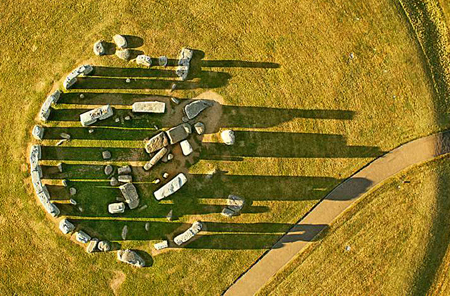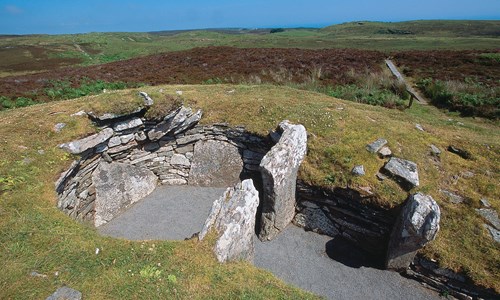lecture 3 - outline
Neolithic - continued
Bronze Age
Topics:
Advent of sun worship, astronomy
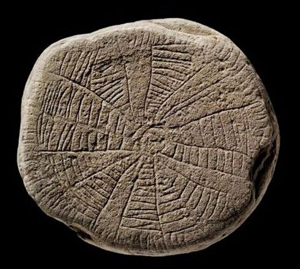
"Sunstone" - more at
Anynewsbd.com
The First Cities
Jericho - c. 7000 BC
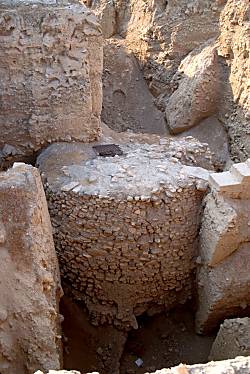
Jericho - Neolithic Tower
Jericho
- Khan Academy
|
|
The First Towns:
Seedbeds Of Civilization - History World
Catal Huyuk
- Local Histories
Catul Huyuk c. 7000 - 6500 B.C. - (Pre-Hittite Anatolian)
larger city - trade with Jericho.
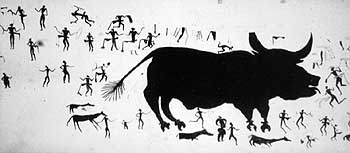
wall paintings (example: fresco, "Great Bull") |
|
"Bronze Age"
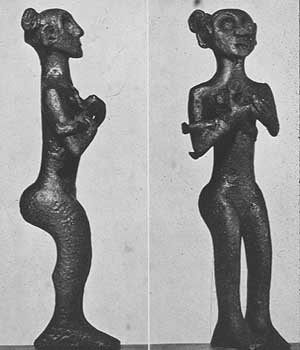
Pre-Hittite Anatolian Bronze Sculpture c. 2100 B.C.
(Mother & Child; 8")
Aug., 2002: Anatolian
Art and Architecture - Encyclopedia Brittanica
Mesopotamia - Sumer, Akkad, Babylonia:
|
|
|
|
Both above are Sumerian - c. 2500 BC
|
Ancient
Mesopotamia -
Penfield Central School District
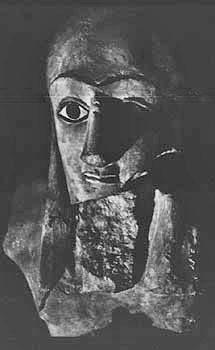
Statuette of Sumerian Worshipper
(11", gypsum; 'early dynasty')
|
|
|
|
Both of the above c. 2300 B.C.
|
|
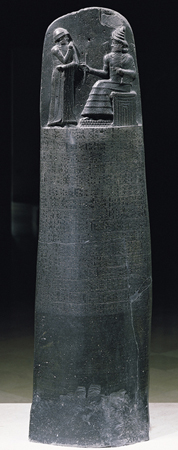
Stele of Hammurabi (Babylonian King)
(7' 4.5"; Basalt) 1790 B.C.
|
Vitally important in the history of Law and Civilization,
The Stele of Hammurabi is also significant in the history
of portraiture.
Here the leader is seen receiving his divine authority
to rule from Shamash.
The modern concept of a 'portrait' is still centuries away:
chiefly rulers, at this time in history still associated
with divinity,
are uniquely portrayed in art.
Generalizations of soldiers, slaves, etc. are usually presented
in groups:
only the most important individuals are formally depicted
in this era.
Law
Code of Hammurabi, King of Babylon - The Louvre
The
Stele of Hammurabi - Art History 235
Code
of Hammurabi - Wikipedia
Hammurabi
- History.com
|
Anatolian Steles - show 'formalization' in depictions of rulers;
typical of this era :
An
Anatolian Funerary Stele in an Antique Shop in Seville, Spain
- Academia.edu
Kakasbos Stele
- Wikipedia
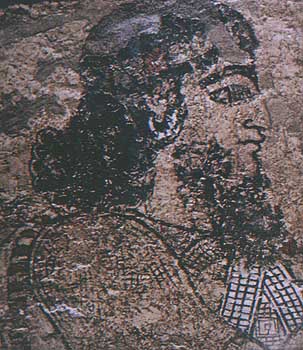
Assyrian, Tell Ahmar, Syria - c. 880 B.C.
relief; fresco
Nimrud
Relief Panel - The Metropolitan Museum of Art
|
Mediterranean 'Aegean':
Cycladic - figurine 'idol'
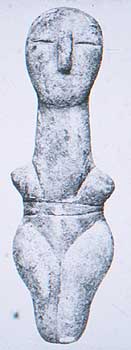 marble, c. 2000 B.C.
marble, c. 2000 B.C. |
Cycladic Head
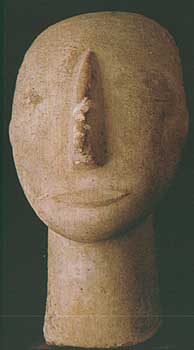 marble, c. 3000 B.C., 11.5"
marble, c. 3000 B.C., 11.5"
|
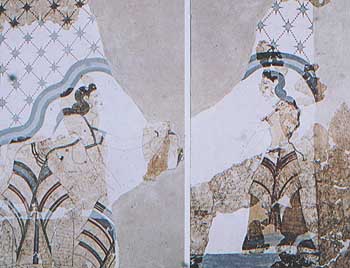
Minoan - fresco, "two ladies" |
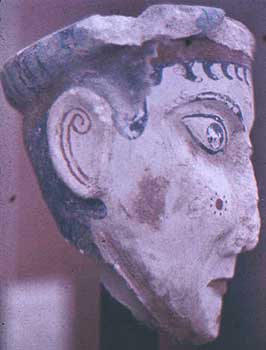
Mycenaean - Painted Stucco Head
limestone, c. 1300 B.C. |
Early
Cycladic Art and Culture - Metropolitan Museum of Art
Cycladic Sculpture
- Ancient History Encyclopedia
Cycladic
Art - Wikipedia
Home | Lecture
1 | Lecture 2
| Lecture 4
